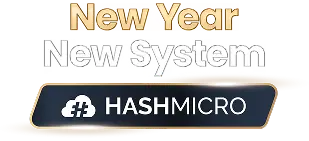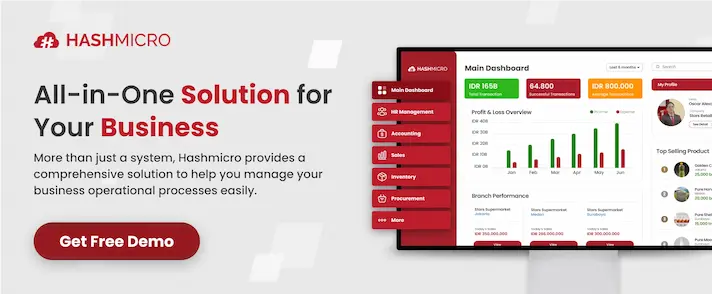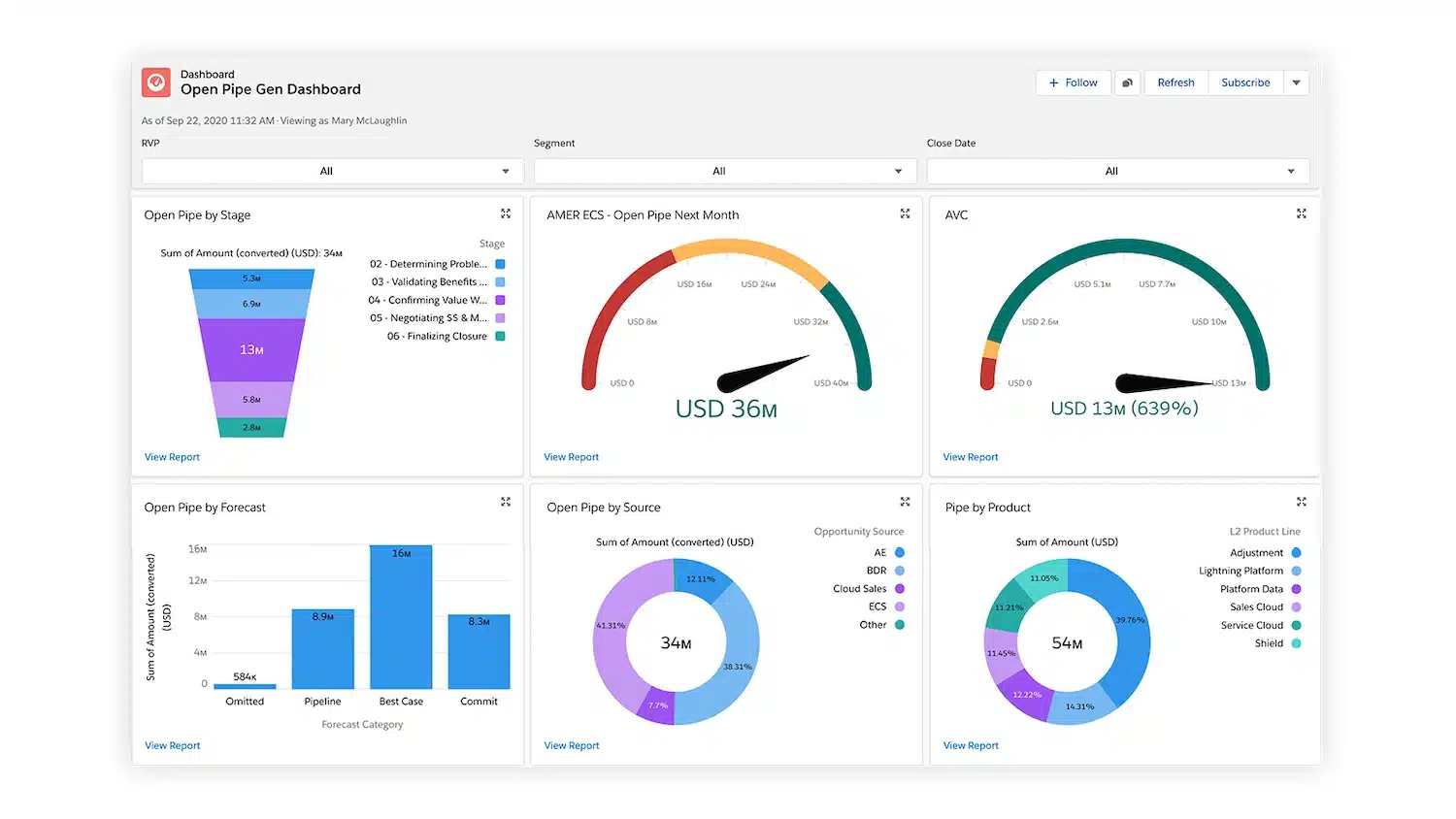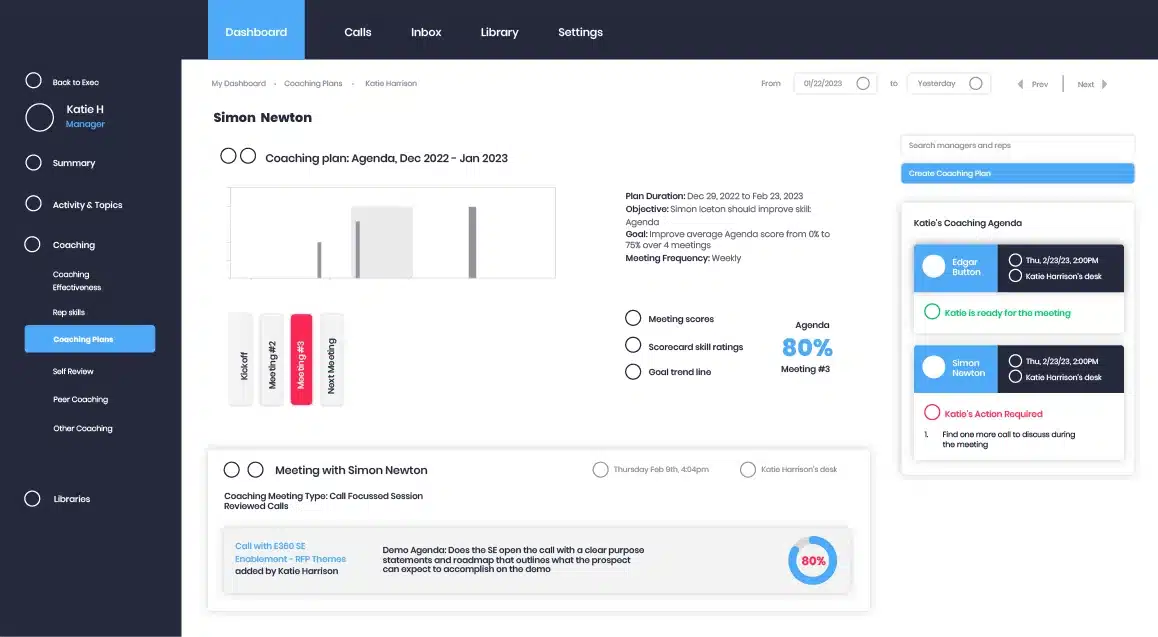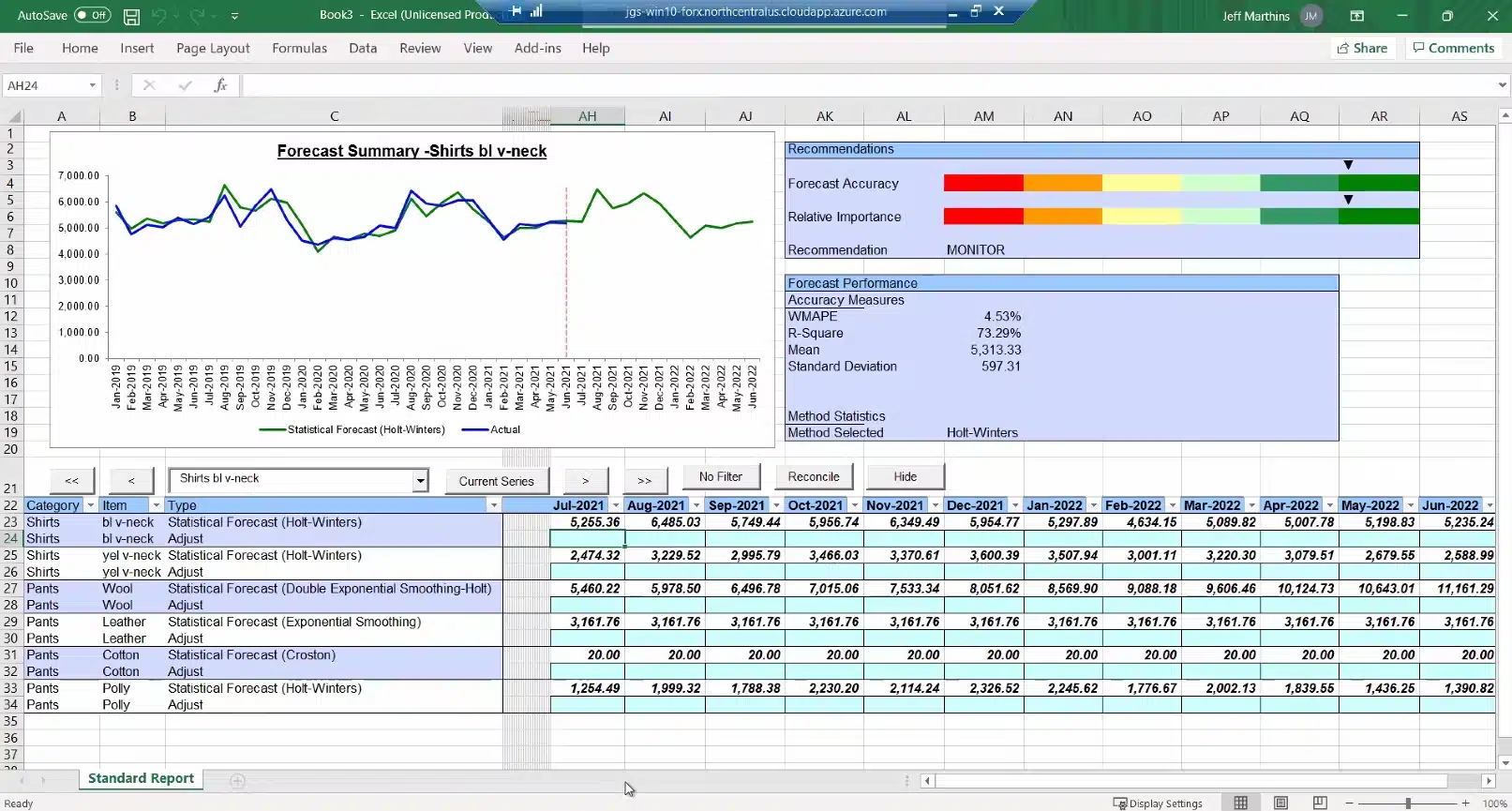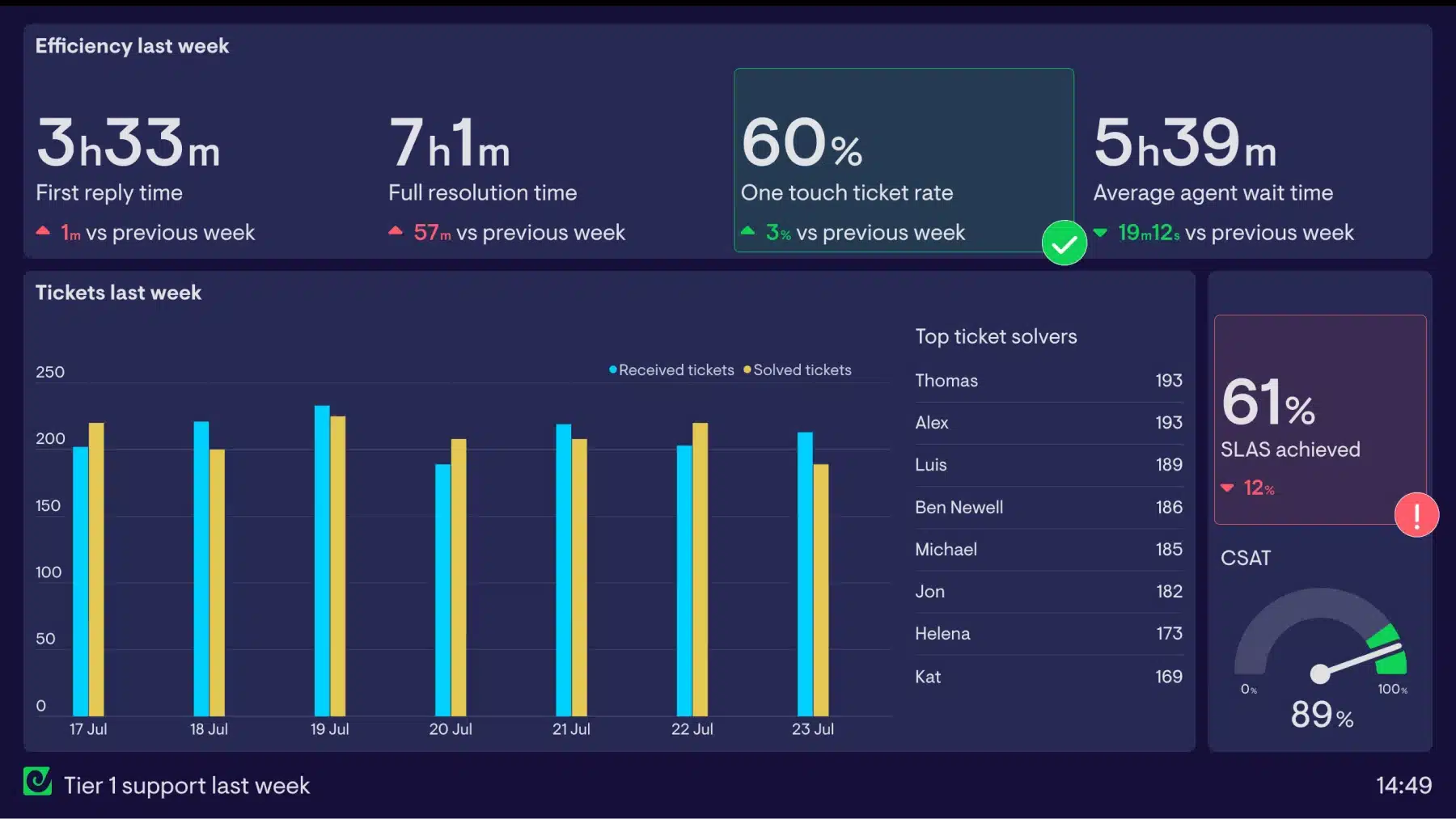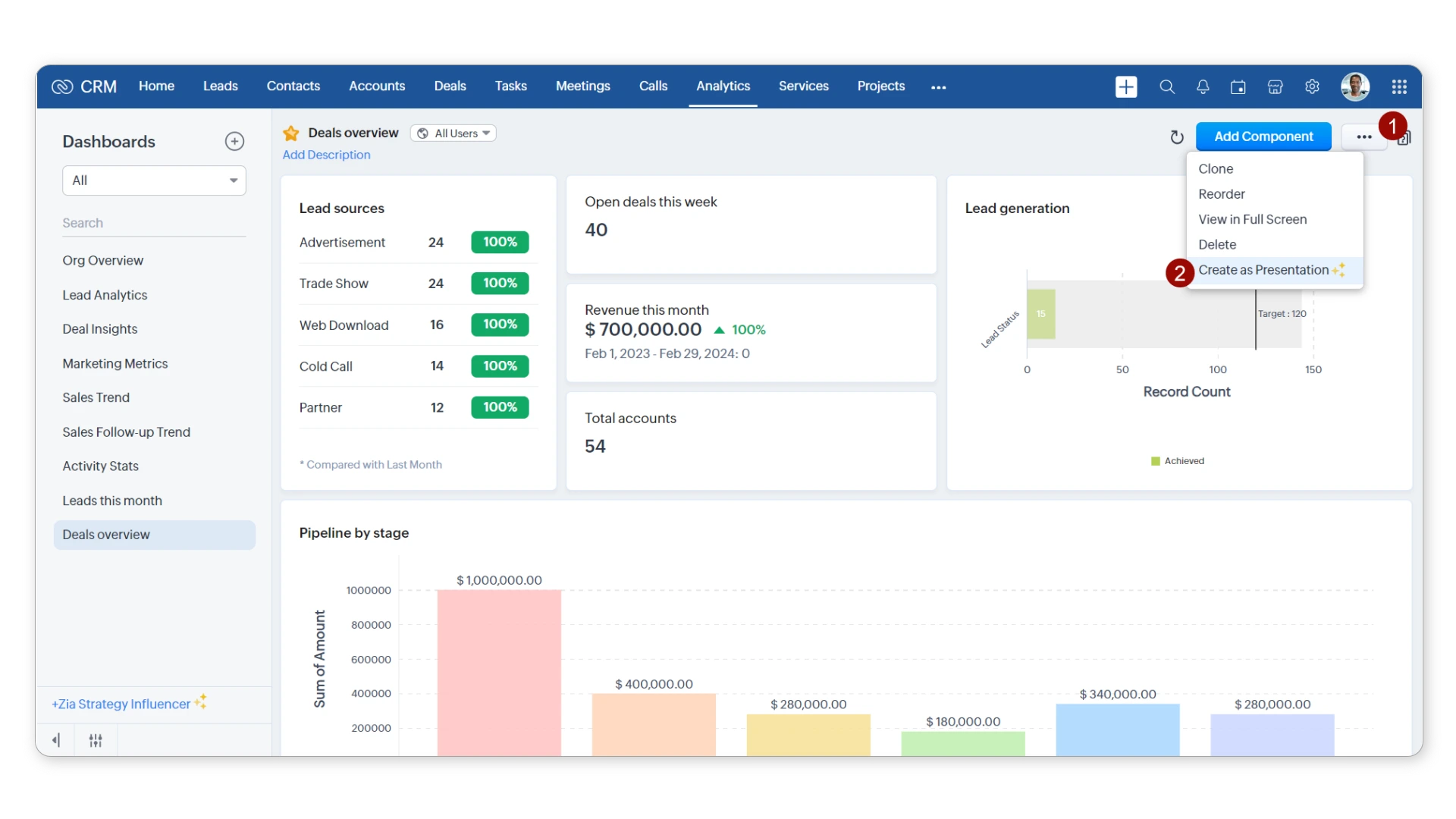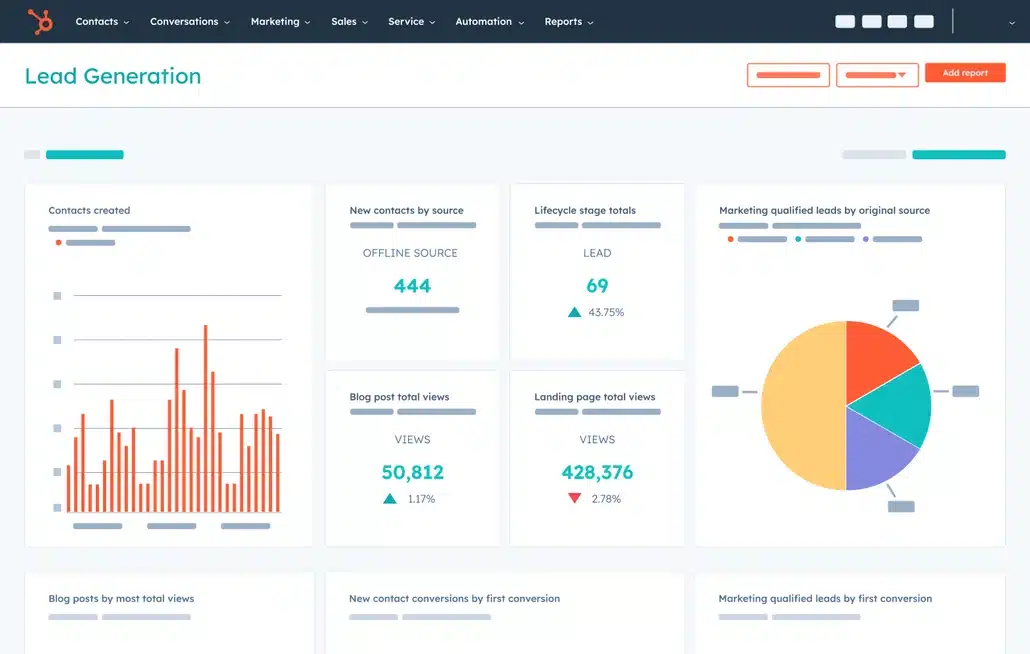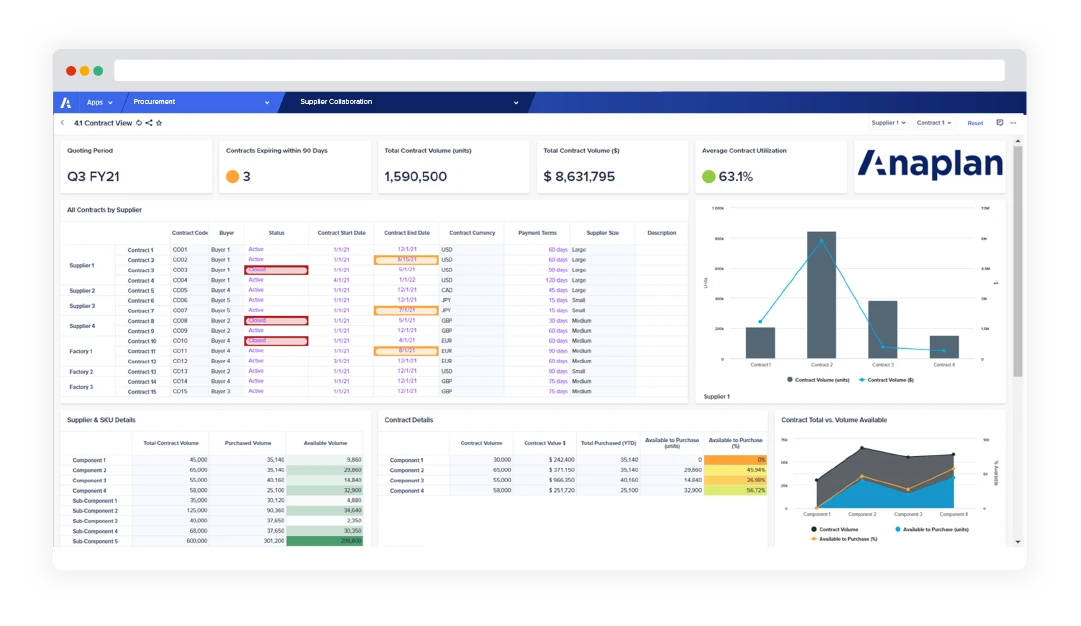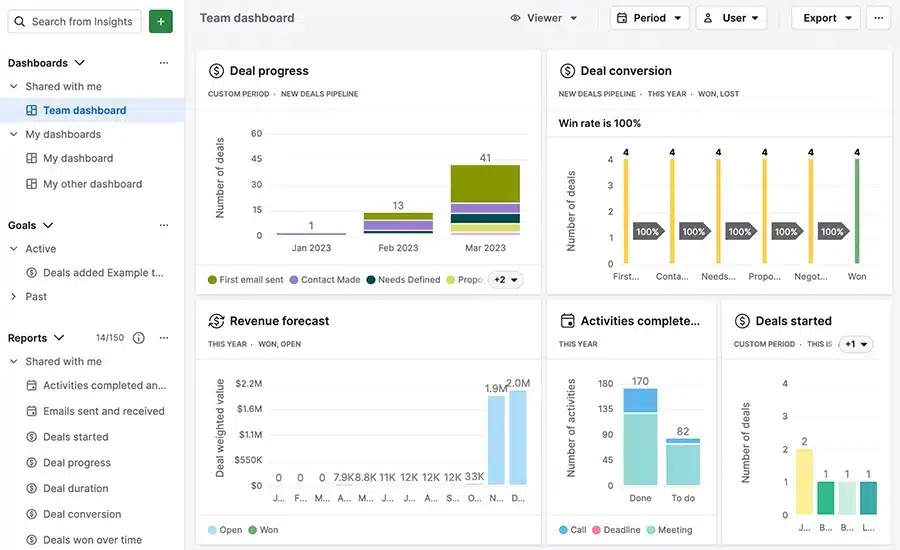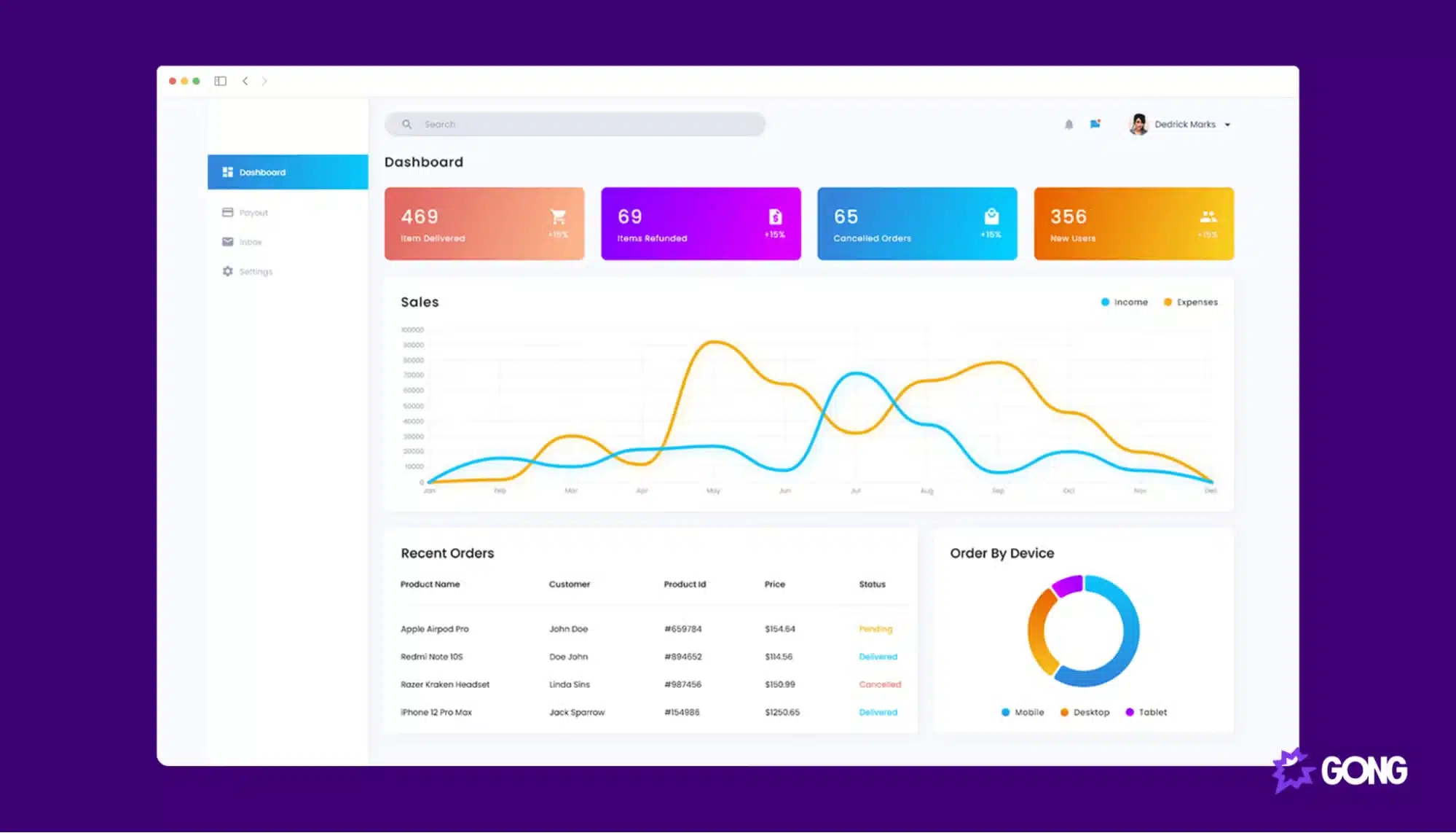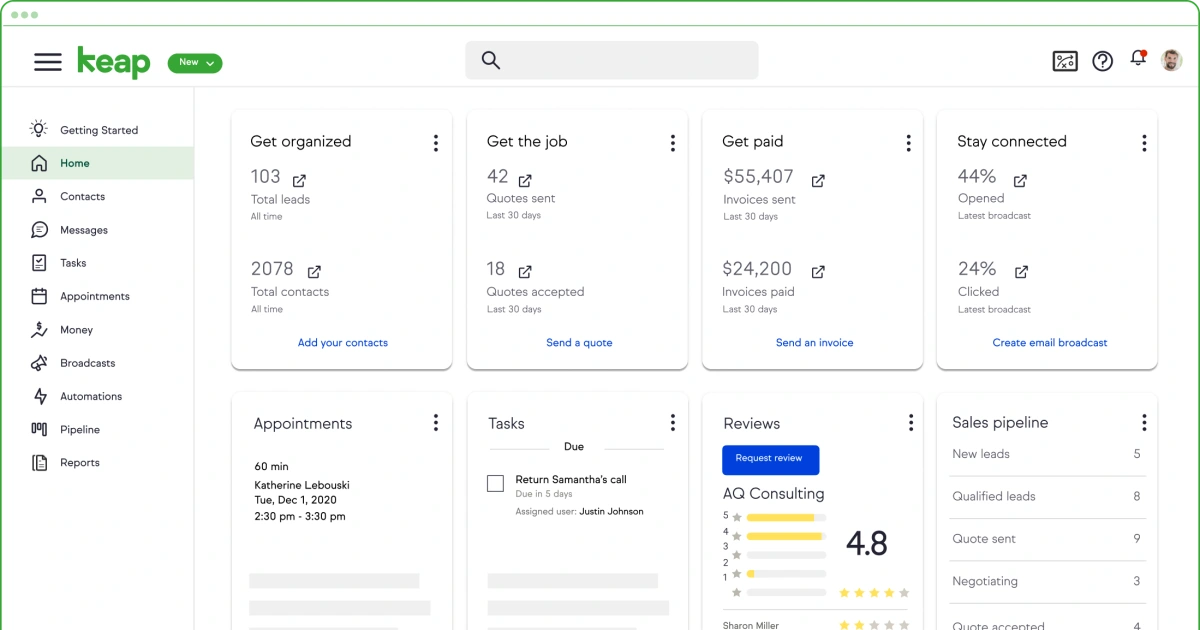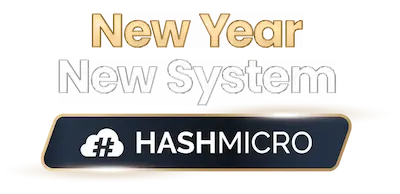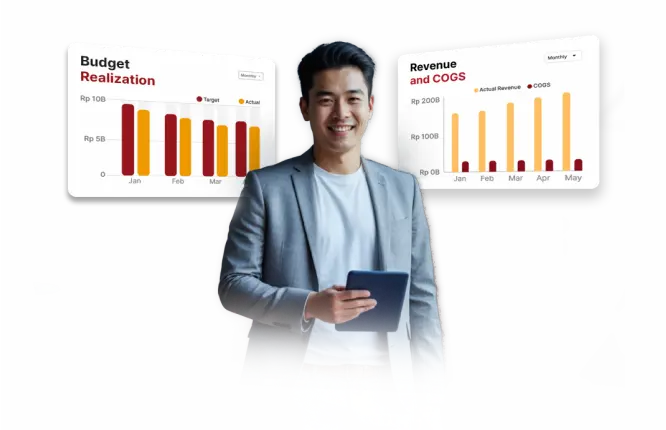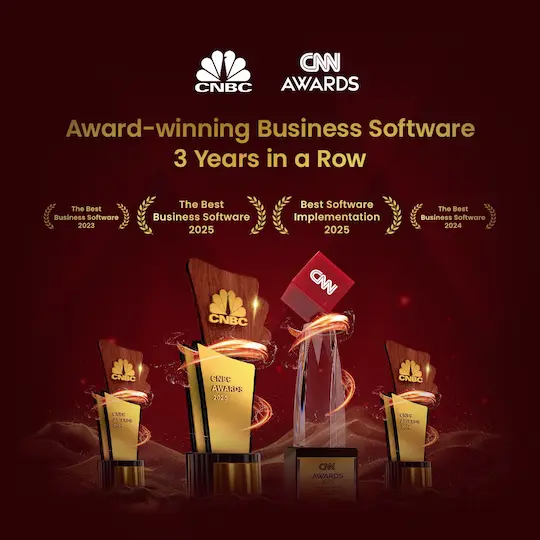Sales forecasting software enables businesses to predict future sales by analyzing historical data, market trends, and other relevant variables. With accurate forecasts, companies can optimize their inventory, plan budgets, and make more informed strategic decisions.
According to Allied Market Research, the global predictive analytics market is projected to grow from USD 10.2 billion in 2023 to USD 63.3 billion by 2032, with a CAGR of 22.4%. This technology is widely used for sales forecasting through AI and real-time data analytics.
One of the top solutions in this space is HashMicro Sales Forecasting Software, which offers AI-powered sales predictions, seamless integration with CRM and inventory systems, and comprehensive reporting dashboards to support data-driven decision-making.
To help you find the right tool for your business, here are 12 of the best sales forecasting software options to consider in 2025.
Key Takeaways
|
What is Sales Forecasting Software?
Sales forecasting software is a tool that helps businesses predict future sales based on historical data and market trends. It works by analyzing patterns and generating data-driven projections to support planning and decision-making.
The primary goal of sales forecasting software is to deliver accurate and actionable insights that facilitate informed decision-making. With a clear view of future sales, businesses can:
- Optimize inventory levels
- Allocate resources efficiently
- Set realistic sales targets.
- Manage cash flow
- Adjust marketing or pricing strategies as needed.
Modern sales forecasting tools often integrate with CRM, ERP, and other business systems to ensure data accuracy and reduce manual input. As markets become more competitive and data-driven, this type of software is increasingly vital for companies that want to stay ahead of demand and maximize profitability.
How does Sales Forecasting Software Work?
Sales forecasting software works by collecting and analyzing various data points to estimate future sales performance. It typically pulls data from multiple sources, such as CRM systems, past sales records, market trends, and customer behavior, to identify patterns and predict outcomes.
The software uses statistical models, machine learning algorithms, or AI to process this information. Based on the chosen forecasting method (such as historical, pipeline, or trend analysis), it generates sales projections over a specific time frame.
Most modern tools also offer customizable dashboards, visual reports, and alerts, enabling sales teams and decision-makers to monitor progress and adjust strategies in real-time.
By automating data analysis and eliminating guesswork, the software enhances forecast accuracy, enabling businesses to make more informed, data-driven decisions.
12 Best Sales Forecasting Software in 2025
To help you choose, here are 12 of the best sales forecasting software options in 2025—each with unique strengths to match different business needs.
1. HashMicro Sales Forecasting
HashMicro Sales Forecasting is more than just a tool for managing customer relationships—it’s also equipped with a powerful sales forecasting engine designed to help businesses make smarter, data-driven decisions.
Especially suited for businesses in Southeast Asia, HashMicro CRM gives sales teams a clear view of targets, performance trends, and expected outcomes, all from a single, intuitive platform. Try a free demo to see how it can optimize your sales forecasting.
Key features:
- Sales Forecasting: Predict future sales with AI-powered insights based on historical data, pipelines, and current performance, helping you plan targets more accurately.
- Leads – Hash Quality Score: Automatically score leads based on behavior, source, and engagement levels to help your team prioritize high-potential prospects.
- KPI for Activity Targeting: Set and monitor key sales activities like calls, meetings, or follow-ups to ensure your team stays aligned with performance goals.
- CRM Mobile Apps – Android & iOS: Access your CRM anytime, anywhere with mobile apps that let you manage leads, update pipelines, and track activities on the go.
- Pipeline Sales Management: Visualize and manage your entire sales pipeline from first contact to closing, with drag-and-drop features for easy progress tracking.
| Pros | Cons |
|
|
Curious about how much it would cost to implement HashMicro CRM with full sales forecasting features? Click the banner below to view our pricing plans and find the package that best suits your business needs.
2. Salesforce
Salesforce is a leading enterprise CRM platform with powerful AI-driven forecasting tools. It’s ideal for medium to large businesses that need advanced customization and in-depth pipeline visibility.
Features:
- AI-powered forecasting with Einstein Analytics
- Real-time pipeline tracking
- Custom dashboards and reporting
- Integrates with a wide range of apps
| Pros | Cons |
|
|
3. Mediafly
Mediafly combines sales enablement with forecasting to provide visually rich insights and planning tools. It’s suitable for businesses that want dynamic forecasting paired with content and sales performance features.
Features:
- Interactive forecasting dashboards
- Real-time scenario planning
- Sales enablement integration
- CRM and BI platform support
| Pros | Cons |
|
|
4. ForecastX
ForecastX is an Excel-based forecasting tool that’s ideal for companies seeking affordability and statistical accuracy without the need for complex software setups. It caters to operations and planning professionals who prefer working in a familiar spreadsheet environment.
Features:
- Time-series and regression models
- Demand planning capabilities
- Works directly in Excel
- Quick deployment
| Pros | Cons |
|
|
5. Zendesk
Zendesk Sell provides basic yet effective forecasting for smaller sales teams seeking an easy-to-use, mobile-friendly CRM and sales pipeline tool. It’s ideal for businesses that prioritize simplicity, speed, and streamlined operations, without the need for complex customization.
Features:
- Real-time deal tracking
- Pipeline forecasting
- Mobile access
- Integration with Zendesk products
| Pros | Cons |
|
|
6. Zoho CRM
Zoho CRM offers affordable, AI-powered forecasting features within a full-suite CRM system. It’s an excellent option for small to mid-sized businesses looking for integrated tools on a budget. The platform also supports extensive automation and cross-functional collaboration.
Features:
- Sales forecasting with AI assistant
- Custom reports and analytics
- Integration with inventory, email, and marketing tools
- Workflow automation
| Pros | Cons |
|
|
7. Hubspot
HubSpot is a user-friendly CRM with basic sales forecasting tools, ideal for startups and small businesses that want streamlined forecasting without the complexity. With a clean interface and free tier, it’s perfect for teams getting started with data-driven sales planning.
Features:
- Forecasts based on deal stages
- CRM and pipeline management
- Goal tracking and revenue reporting
- Free plan with upgrade options
| Pros | Cons |
|
|
8. Anaplan
Anaplan is a cloud-native planning platform designed for enterprise-level forecasting across departments. Its sales forecasting module allows complex scenario modeling with real-time collaboration.
Features:
- Predictive sales forecasting and quota planning
- Scenario modelling and what-if analysis
- Enterprise-wide data connectivity
| Pros | Cons |
|
|
9. Pipedrive
Pipedrive is a CRM built with simplicity and sales productivity in mind, offering visual forecasting through its sales pipeline. It’s ideal for small businesses or startups looking for an easy entry point into forecasting.
Features:
- Deal-based sales forecasting
- Drag-and-drop pipeline management
- Activity tracking and automation
| Pros | Cons |
|
|
10. Gong.io
Gong.io offers revenue intelligence by analyzing sales conversations and activities to generate forecasting insights. It brings a unique approach by focusing on real engagement data rather than just pipeline figures.
Features:
- AI-powered deal forecasting
- Conversation analytics (calls, emails, meetings)
- Pipeline risk detection
| Pros | Cons |
|
|
11. Aviso
Aviso is an AI-driven sales forecasting platform that focuses on pipeline accuracy and deal inspection. It helps revenue teams stay proactive by flagging risks and recommending next steps.
Features:
- Predictive sales forecasting
- Pipeline health scoring
- AI-guided deal execution
| Pros | Cons |
|
|
12. Keap
Keap is a lightweight CRM and marketing automation tool for small businesses, with basic forecasting features. It’s best for entrepreneurs who want a simple system to track sales stages and automate follow-ups.
Features:
- CRM with lead and sales tracking
- Email marketing and automation
- Sales stage forecasting
| Pros | Cons |
|
|
Choosing the Right Sales Forecasting Software
With numerous sales forecasting tools available, selecting the right one depends on your business size, sales process complexity, and long-term objectives. A solution that works for a startup may not meet the needs of an enterprise with multiple sales channels and territories.
Here are the key factors to consider when selecting the right software:
- Business Size and Team Needs: Small teams may prefer user-friendly tools with simple interfaces, while larger organizations often need more advanced platforms that offer deeper customization and greater scalability..
- Forecasting Methodology: Make sure the software supports your preferred approach—whether it’s historical trend forecasting, pipeline-based projections, or AI-driven predictive modelling.
- Integration Capabilities: Select a platform that seamlessly integrates with your existing CRM, ERP, or marketing tools to ensure accurate and real-time data synchronization.
- Ease of Use and Adoption: The best tool is only effective if your team uses it. Look for clean interfaces, mobile accessibility, and minimal training requirements.
- Reporting and Customization: Your chosen solution should offer flexible reports and dashboards so you can tailor forecasts to your sales goals and KPIs.
- Budget and ROI:
- Consider not just the cost, but the value it brings—saving time, improving accuracy, and supporting more intelligent decision-making.
Ultimately, the right software should empower your team with actionable insights, streamline your sales planning process, and grow with your business over time.
Conclusions
Sales forecasting software plays a crucial role in helping businesses accurately predict revenue, allocate resources effectively, and make informed decisions. By turning raw data into actionable insights, it enables teams to stay proactive and focused on real targets.
However, choosing the wrong tool, whether it is too complex, too limited, or not well-integrated, can lead to inaccurate forecasts and missed opportunities. That’s why it’s essential to select a solution that aligns perfectly with your team’s size, workflow, and long-term objectives.
HashMicro Sales Forecasting offers a reliable, AI-powered forecasting feature built directly into its all-in-one system. Designed for growing businesses, especially in Southeast Asia, it combines accuracy, ease of use, and full ERP integration.
Ready to see how it works? Try a free demo today and discover how HashMicro CRM can elevate your sales forecasting.
Warning: Undefined array key "med" in /home/hashmicr/public_html/blog/wp-content/plugins/insert-headers-and-footers/includes/class-wpcode-snippet-execute.php(419) : eval()'d code on line 281
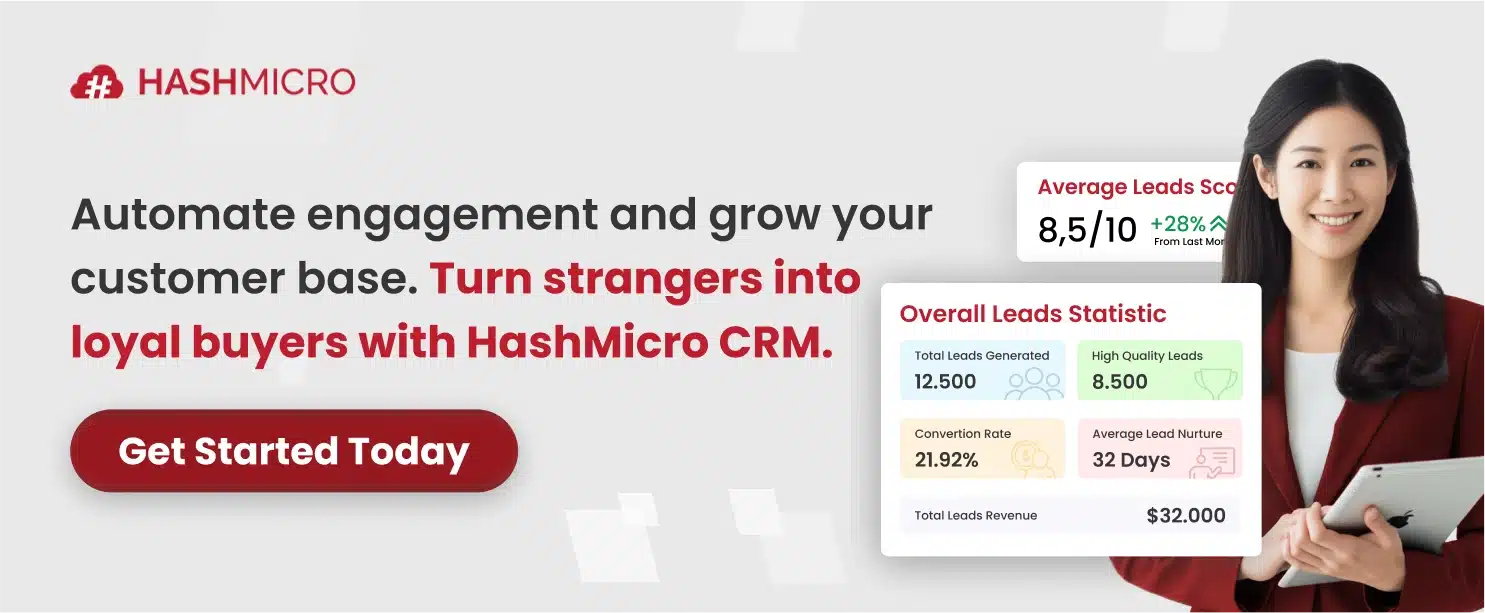
FAQ About Sales Forecasting Software
-
What is KPI in forecasting?
KPI, or Key Performance Indicator, is a measurable value used to track progress toward a specific goal over time. It helps teams set clear targets, assess achievements, and make informed decisions across different levels of the organization.
-
Can AI do financial forecasting?
AI is transforming financial forecasting from a manual and often inaccurate task into a more efficient, insight-driven process. Rather than replacing human judgment, it enhances the capabilities of finance teams by analyzing large volumes of data and uncovering patterns that support smarter decision-making.
-
How to improve sales forecasting?
Maintain consistent CRM usage: Reliable sales forecasts depend on accurate, well-organized data. Without clear guidelines for recording deal stages, customer interactions, and shifts in buyer intent, your forecasts will lack the consistency needed for dependable insights.

